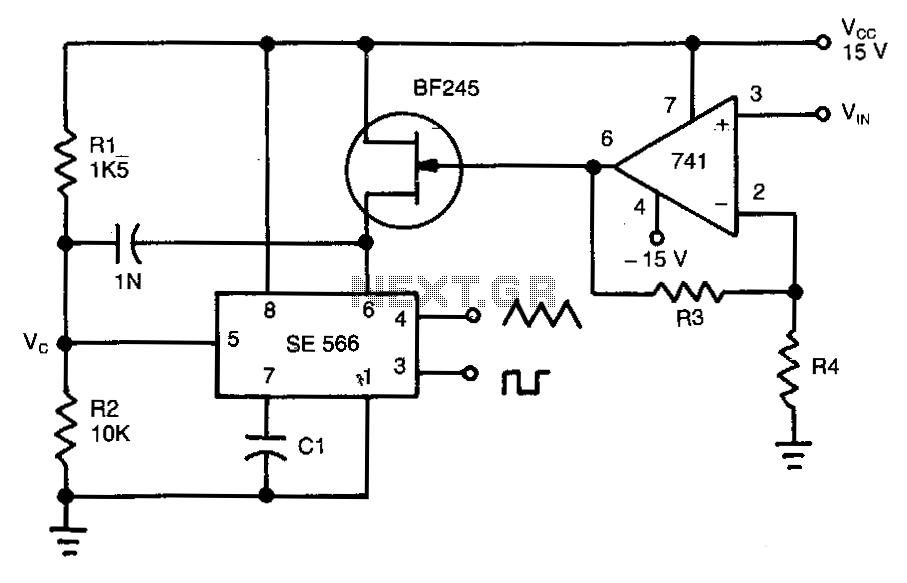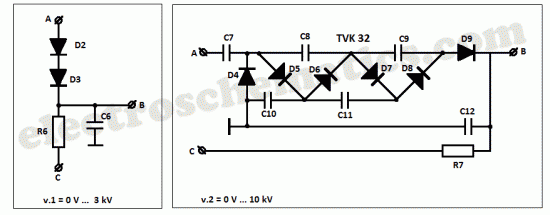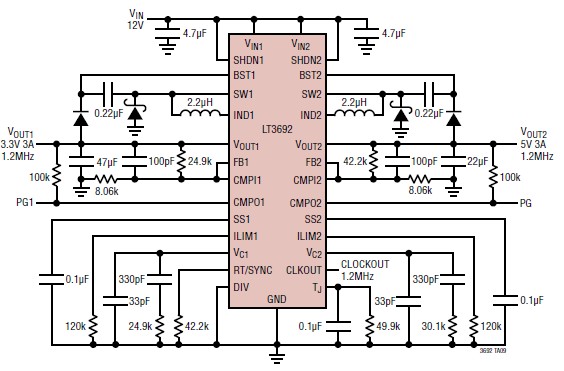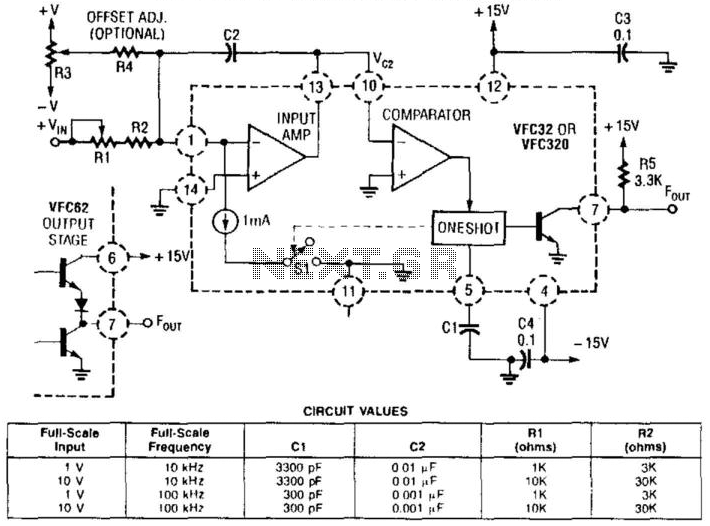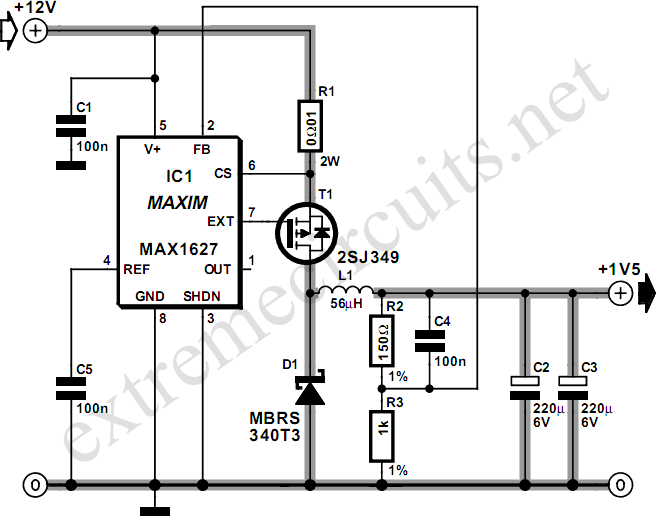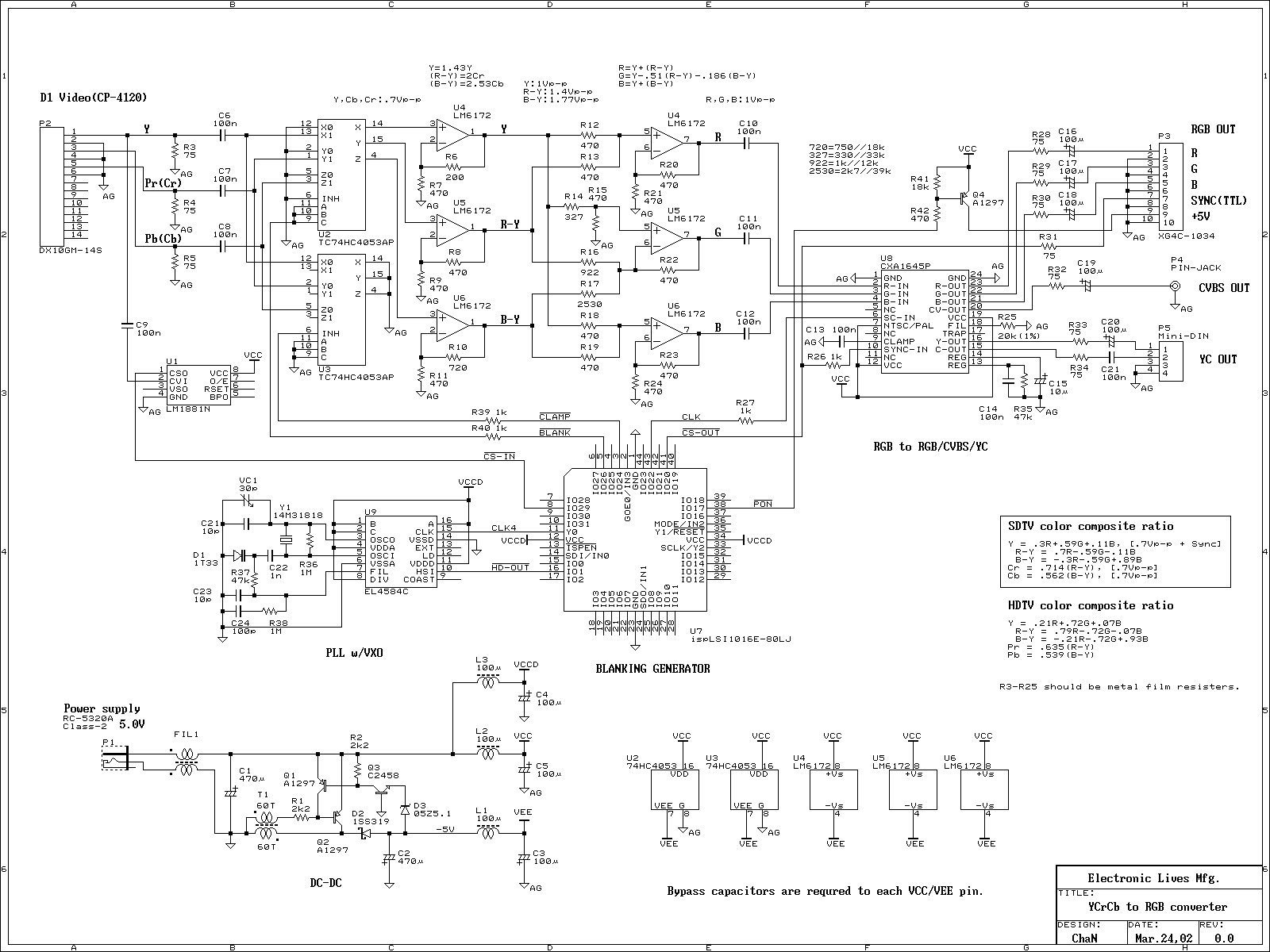
IF Converter
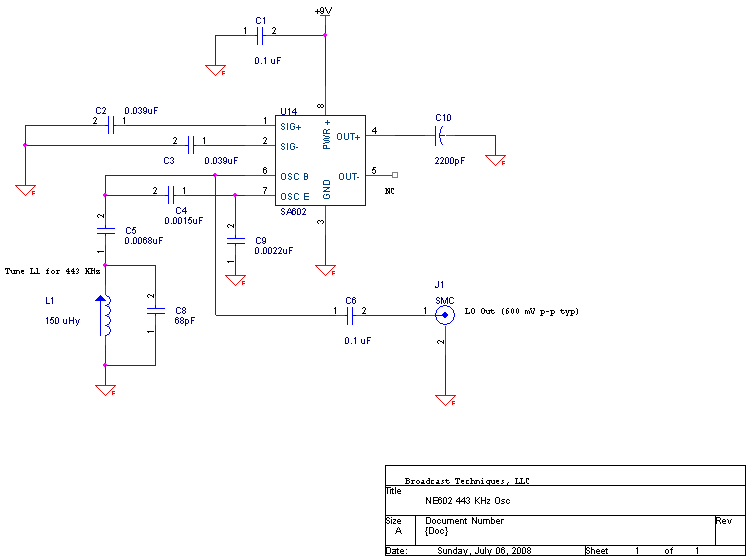
For those who cannot afford the high cost of some SDR radios, there is an alternative. This document describes an intermediate frequency (I.F.) converter suitable for use with Boat Anchor communications receivers. It is now possible to connect the excellent front ends of an R390 or SP600 to the input of a modern software-defined receiver (SDR) that employs digital signal processing (DSP) to implement fast Fourier transform spectral filtering, synchronous detection, and multimode demodulation. Additionally, some software-defined receivers offer panoramic displays that allow users to visualize a spectral display of their current QSO and neighboring signals. Users can customize the reception bandwidth for any demodulation mode, shift the I.F. frequency, perform high-quality noise blanking, and implement automatic notch filtering to suppress unwanted carriers. This combination of classic Boat Anchor communications receiver front ends with mechanical I.F. filtering results in a high-performance receiver by contemporary standards. It offers a relatively inexpensive way to experiment with SDR technology. The popular public domain software developed for use with the Flex Radio Systems SDR-1000 can be utilized with this converter. This software can be downloaded from the Flex Radio Systems website. The Power SDR software package version 1.12.0 or the latest version available should be obtained. The file may have its extension changed to .efw to bypass virus protection software. After downloading the ZIP file, the extension should be changed to .zip, and it can then be unzipped using WinZip or any preferred file compression software. Once the Setup.exe file is in a folder, the software can be installed on a computer. After installation, the Power SDR program can be initiated by double-clicking the icon on the desktop. The computer used for this setup is an older custom-built PC with an Intel Pentium III series 1 GHz processor, an Intel D815EEA2 motherboard, and 512 MB of SDRAM (more memory is recommended). It operates on Windows 2000. A faster sound card than the standard PC sound card may be necessary. Both an integrated Intel sound card (48 kHz sampling) and an M-Series Delta PCI sound card (up to 96 kHz sampling) have been used. For a 48 kHz implementation, the spectral bandwidth can reach up to 20 kHz or ±10 kHz. Some adjustments to memory resources were required with the M-Series PCI sound card to prevent sound resource stuttering. Several "boat anchor" receivers are present in the ham shack, including a TMC GPR-90, an R390, and a Hammarlund SP600-jx17. The stagger-tuned I.F. (~18 kHz) in the SP600 effectively utilizes the bandwidth of the Flex SDR receiver (±10 kHz) in wideband selection mode (13 kHz). The R390 features a 16 kHz wide position, which also occupies most of the available bandwidth. The bandpass of these receiver I.F.s does not exhibit a sharp cutoff, so a wide bandpass of approximately 20 kHz can be observed in the panoramic display of the Power SDR receiver when the passband is expanded. It is possible to tap off prior to the I.F. filters in the receiver and AC couple approximately 1 volt to the input of the converter board. In this scenario, the Power SDR receiver will handle all filtering through digital signal processing within the PC. Extensive experimentation has been conducted with the Analog Devices AD6072 Low Power Mixer/AGC/RSSI 3V Receiver I.F. Subsystem chip. A block diagram of this board is included in the accompanying figure. The hardware converter designed utilizes the AD607 I/Q detector only; however, other configurations are possible with this chip, which can extend its application.
The described I.F. converter offers a versatile solution for integrating vintage analog receivers with modern digital processing capabilities. By allowing the coupling of traditional receivers, such as the R390 and SP600, with contemporary SDRs, users can benefit from enhanced features such as digital filtering and demodulation, which were not available in older equipment.
The implementation of DSP techniques enables precise control over reception parameters, allowing for tailored bandwidth settings and effective noise management. The ability to visualize signals through panoramic displays not only enhances the user experience but also provides valuable insights into the radio spectrum, facilitating better communication strategies.
In terms of hardware setup, the choice of sound cards is crucial for achieving optimal performance. The M-Series Delta PCI sound card, with its higher sampling rate, can significantly improve the quality of received signals, particularly in environments with high levels of interference. The described system's flexibility allows for experimentation with various configurations, making it suitable for both amateur and advanced users interested in exploring the capabilities of SDR technology in conjunction with classic receivers.
The use of the AD607 chip further enhances the potential applications of the converter, allowing for various configurations depending on user requirements. This adaptability not only supports a wide range of operational modes but also ensures compatibility with different receiver architectures, making it a valuable addition to any radio enthusiast's toolkit.For those of us that cannot afford the high cost of some of these SDR radios there is hope. Here I describe an I. F. converter suitable for use with Boat Anchors Communications receivers. Now it is possible to couple the great front ends of an R390 or SP600 to the input of a modern software defined receiver that utilizes DSP Processing to implement Fast Fourier Transform spectral filtering, Sync Detection, and multimode demodulation. In addition some of these software defined receivers provide panoramic displays allowing the user to see a spectral display of ones current QSO and neighboring signals above and below. One can tailor the bandwidth of reception for any mode of demodulation, Shift the I. F Frequency, perform high quality noise blanking, and implement automatic notch filtering for suppressing those carrier slingers that don`t know how to use dummy loads.
This all coupled with the classic boat anchor communications receivers front end with mechanical I. F. filtering, pulls together a truly high performance receiver by today`s modern standards. It`s a relatively inexpensive way to experiment with SDR`s. The popular Public Domain software package developed for use with the Flex Radio Systems SDR-1000 can be used with this converter. You can obtain this public domain software from the Flex Radio Systems Web Site1. Simply download the Power SDR software package v. 1. 12. 0 or the latest version available. The file has it`s extension changes to. efw to get past virus protection software. After downloading the ZIP file just change the extension to. zip and Winzip or your favorite file compression software will unzip the files. Once you have the Setup. exe file in a folder you can install the software on your computer. The Power SDR will load and install on your computer. Once loaded you can start the program by double clicking on the file icon on your desktop. My computer is an older custom built PC using an Intel Pentium III series 1 GHz processor. The heart of the PC is an Intel D815EEA2 motherboard and has 512 MB (more is better) of SDRAM installed.
I run Windows 2000 on this PC. You may require a faster sound card than what is normally supplied with a PC. I have used both my integral Intel sound card (48 KHz) sampling and an M-Series Deltas PCI sound card which can sample up to 96 KHz. For a 48 KHz implementation the spectral bandwidth will be up to 20 KHz or ± 10 KHz. Some adjustment of memory resources was necessary with the M-series PCI sound card to stop sound resource stuttering.
I have several "boat anchor" receivers in my Ham Shack ranging from a TMC GPR-90 (Technical Materials Corporation), and R390, to a Hammarlund SP600-jx17. The stagger tuned I. F. (~18 KHz) in my SP600 fills the bandwidth of the Flex SDR receiver ( ±10 KHz) quite well in the wide band selection mode (13 KHz) on the front panel.
An R390 has a 16 KHz wide position which will also occupy most of the available bandwidth. The bandpass of these receiver I. F. s don`t fall off like a brick wall so expect to see in the Panadaptor spectral display of the Power SDR Receiver, most of the 20 KHz bandpass available when you widen out the passband in the SDR. Of course one could tap off prior to the I. F. filters in your receiver and AC couple about 1 volt to the input of the converter board. In this case the Power SDR receiver will do all the filtering in the Digital Signal Processing within your PC.
I have experimented extensively with the Analog Devices AD6072 Low Power Mixer/AGC/RSSI 3V Receiver IF Subsystem chip in the past. A block diagram of this board is shown in Figure 1. The hardware converter I designed uses AD607 I/Q detector only. However, other configurations are possible with this chip which can extend it`s use to a full blown r
🔗 External reference
The described I.F. converter offers a versatile solution for integrating vintage analog receivers with modern digital processing capabilities. By allowing the coupling of traditional receivers, such as the R390 and SP600, with contemporary SDRs, users can benefit from enhanced features such as digital filtering and demodulation, which were not available in older equipment.
The implementation of DSP techniques enables precise control over reception parameters, allowing for tailored bandwidth settings and effective noise management. The ability to visualize signals through panoramic displays not only enhances the user experience but also provides valuable insights into the radio spectrum, facilitating better communication strategies.
In terms of hardware setup, the choice of sound cards is crucial for achieving optimal performance. The M-Series Delta PCI sound card, with its higher sampling rate, can significantly improve the quality of received signals, particularly in environments with high levels of interference. The described system's flexibility allows for experimentation with various configurations, making it suitable for both amateur and advanced users interested in exploring the capabilities of SDR technology in conjunction with classic receivers.
The use of the AD607 chip further enhances the potential applications of the converter, allowing for various configurations depending on user requirements. This adaptability not only supports a wide range of operational modes but also ensures compatibility with different receiver architectures, making it a valuable addition to any radio enthusiast's toolkit.For those of us that cannot afford the high cost of some of these SDR radios there is hope. Here I describe an I. F. converter suitable for use with Boat Anchors Communications receivers. Now it is possible to couple the great front ends of an R390 or SP600 to the input of a modern software defined receiver that utilizes DSP Processing to implement Fast Fourier Transform spectral filtering, Sync Detection, and multimode demodulation. In addition some of these software defined receivers provide panoramic displays allowing the user to see a spectral display of ones current QSO and neighboring signals above and below. One can tailor the bandwidth of reception for any mode of demodulation, Shift the I. F Frequency, perform high quality noise blanking, and implement automatic notch filtering for suppressing those carrier slingers that don`t know how to use dummy loads.
This all coupled with the classic boat anchor communications receivers front end with mechanical I. F. filtering, pulls together a truly high performance receiver by today`s modern standards. It`s a relatively inexpensive way to experiment with SDR`s. The popular Public Domain software package developed for use with the Flex Radio Systems SDR-1000 can be used with this converter. You can obtain this public domain software from the Flex Radio Systems Web Site1. Simply download the Power SDR software package v. 1. 12. 0 or the latest version available. The file has it`s extension changes to. efw to get past virus protection software. After downloading the ZIP file just change the extension to. zip and Winzip or your favorite file compression software will unzip the files. Once you have the Setup. exe file in a folder you can install the software on your computer. The Power SDR will load and install on your computer. Once loaded you can start the program by double clicking on the file icon on your desktop. My computer is an older custom built PC using an Intel Pentium III series 1 GHz processor. The heart of the PC is an Intel D815EEA2 motherboard and has 512 MB (more is better) of SDRAM installed.
I run Windows 2000 on this PC. You may require a faster sound card than what is normally supplied with a PC. I have used both my integral Intel sound card (48 KHz) sampling and an M-Series Deltas PCI sound card which can sample up to 96 KHz. For a 48 KHz implementation the spectral bandwidth will be up to 20 KHz or ± 10 KHz. Some adjustment of memory resources was necessary with the M-series PCI sound card to stop sound resource stuttering.
I have several "boat anchor" receivers in my Ham Shack ranging from a TMC GPR-90 (Technical Materials Corporation), and R390, to a Hammarlund SP600-jx17. The stagger tuned I. F. (~18 KHz) in my SP600 fills the bandwidth of the Flex SDR receiver ( ±10 KHz) quite well in the wide band selection mode (13 KHz) on the front panel.
An R390 has a 16 KHz wide position which will also occupy most of the available bandwidth. The bandpass of these receiver I. F. s don`t fall off like a brick wall so expect to see in the Panadaptor spectral display of the Power SDR Receiver, most of the 20 KHz bandpass available when you widen out the passband in the SDR. Of course one could tap off prior to the I. F. filters in your receiver and AC couple about 1 volt to the input of the converter board. In this case the Power SDR receiver will do all the filtering in the Digital Signal Processing within your PC.
I have experimented extensively with the Analog Devices AD6072 Low Power Mixer/AGC/RSSI 3V Receiver IF Subsystem chip in the past. A block diagram of this board is shown in Figure 1. The hardware converter I designed uses AD607 I/Q detector only. However, other configurations are possible with this chip which can extend it`s use to a full blown r
🔗 External reference
